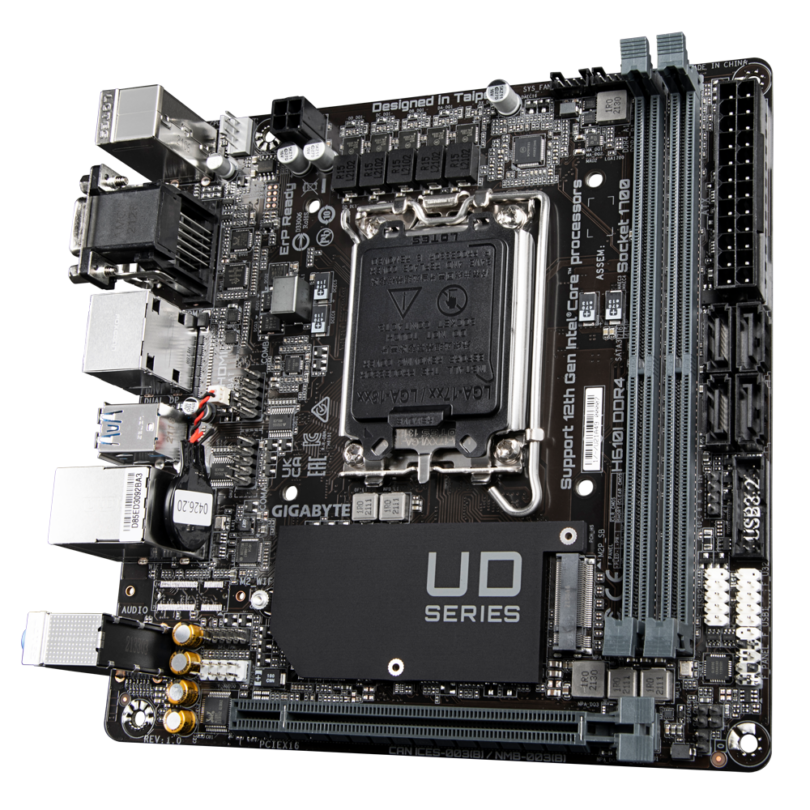
Photo Credit: Gigabyte
Gigabyte has launched their budget LGA-1700 ITX motherboard under the UD line; the H610I DDR4. "Features" include support for up to DDR4-3200 memory, a PCI-e 4.0 expansion slot, and support for a single PCI-e 3.0 M.2 drive. The board features a 4+1+1 VRM design with no cooling. According to Gigabyte's website, the H610I DDR4 supports an i9-12900K; a processor known to draw 250 watts under load...
My take on this:
I normally try to keep my opinion out of this but nothing pisses me off more than motherboards with VRMs that don't even include at least a $1 chunk of metal. The 10 phase VRM Gigabyte Z690I, with a legitimate heatsink, hits 95C in my Meshlicious.
Please don't put an i9-12900K in this board.
The price wasn't available at the time of writing but if this sells for more than $100 then the world is truly lost. Gigabyte should bundle this with a Celeron and AARP membership because this board is probably going to end up in your grandmother's computer for e-mail and Facebook. I'm not even going to link this board. Instead, here is Buildzoid talking about Z690 boards.
Last edited:
